Red bellied pacu - Piaractus brachypomus
Scientific name: Piaractus brachypomus
Common name: Red bellied pacu
Family: Serrasalmidae
Usual size in fish tanks: 70 - 90 cm (27.56 - 35.43 inch)
014
Recommended pH range: 5.9 - 7
Recommended water hardness: 5 - 18°N (89.29 - 321.43ppm)
0°C 32°F30°C 86°F
Recommended temperature range: 22 - 28 °C (71.6 - 82.4°F)
The way how these fish reproduce: Spawning
Where the species comes from: South America
Temperament to its own species: peaceful
Temperament toward other fish species: peaceful
Usual place in the tank: Middle levels
Origin
South America; Red bellied pacu’s are found in the River Basins of the Amazon and the Orinoco River. This fish is also considered as a food source for many people and populations have been introduced in the far east to meet the demand.
Lifespan
The expected life span for Piaractus brachypomus is 25 years.
Short description
To keep Piaractus brachypomus properly, a very large tank is required. As juveniles, they can be kept in small groups but as they mature, it is best to keep a single specimen as they will become very territorial. In the wild these fish inhabit slow moving waters and prefer dimmed lighting so this should be replicated in the aquarium by careful placement of the outlet nozzles from the aquarium filter and the use of floating plants will help to diffuse the lighting.
They are a very active species so because of their large adult size they will require lots of swimming space, this is also another reason why it is not practical for many keepers to have these fish as they simply cannot afford or have the space for a large enough aquarium to keep these fish happy. If you do have the resources they are a definite species to consider but be prepared for the extra work involved, such a large aquarium would also require a large filtration system as they are like all larger species, very high waste producers.
Feel free to visit Pacu Care Basics at firsttankguide.net too!
Food and feeding
The preferred diet of Red bellied pacu is vegetable matter with a few meaty treats. They will eat plants in the tank, providing them with romaine lettuce; fruits and algae flakes will help to alleviate this. Treats of blood worms and brine shrimp will be readily taken.
In the wild the red-bellied pacu has an extremely varied diet due to the wide range of foods available. They will eat fallen fruit alongside vegetable matter, you can offer chopped fruit directly into the aquarium and this will be accepted readily.
Sexing
The males will have pointed dorsal fins and display a deep red colouration. Females will take longer to mature.
Breeding
As of yet there are no reported cases of Red bellied pacu’s breeding in the aquarium, it is believed that in the wild they will deposit their eggs and leave them with no parental skills. In the far east they are being bred but little details to the process is released, it is believed that hormones are used to induce the spawning process but as yet this has not been confirmed.
Pictures
Bought by aqua-fish.net from jjphoto.dk.
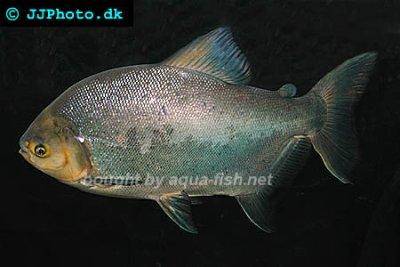






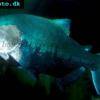 Black
Black 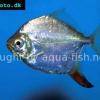 Redhook
Redhook 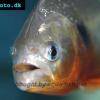 Orinoco
Orinoco  Red
Red  San
San 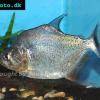 Pinche
Pinche